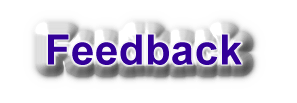

Tale #20This is a story I wish to submit, although it doesn't involve me personally. It does, however, involve how UHF independents (probably all over the country, not just here in Boston) "covered" the news in the late 1960's and the 1970's. The story follows: Here in the Boston area (and probably all over the country as well), many UHF independents in the late 1960's and 1970's did daily newscasts, despite the fact that many of these stations were relatively new. But before you think that they spent money on anchors, reporters, cinematographers, film cameras to shoot news and processing machines to develop news film, think again. |
|
In the late 1960's and throughout the 1970's, it was common practice for many UHF independents, both here and elsewhere, to run 10-to-15 minute newscasts (sometimes longer, sometimes shorter) at sign-on and sign-off. |
|
In some cases, if the station subscribed to the AP service that furnished color slides of newsmakers, the slide would sometimes change from the "news" slide to a photo of some newsmaker while the announcer read an item about the newsmaker. Then, for the next item, it would either go back to a slide of the person involved in the next story (if there was a slide of him) or the generic "news" slide. Sometimes, when the news reached the "Sports" and "Weather", there would be a slide with the station logo with the word "Sports" or "Weather" on it. In the late 1960's, WSBK-TV Boston would run hourly news updates in prime-time during the station-break between shows. These one-minute updates were likewise done with an voice-over and slides. There were probably other updates done this way in other cities. It was dirt-cheap, but at least it allowed UHF independents to have some "news" and fulfilled some of their public-service requiriments with minimal effort, something that was very important in those days since in the late 1960's and early 1970's, UHF independents were generally start-up operations that would lose money for several years. |
|
Joseph Gallant |
|
 |
 |
Home | Ma's Tales | Feedback | Send Me E-mail | Link's | Today's News
Television Bookstore |
Cyber-Aerobics | Hawaii Photos | Jokes | Ma's Stuff